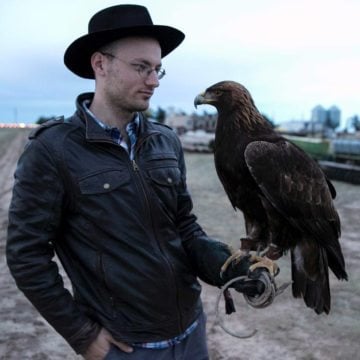Wittliff Collections at Texas State University Opens Charles Bowden Archive

When Charles Bowden, the prolific investigative journalist and writer, died in his sleep on Saturday, Aug. 30, at the age of 69, it was an uncannily quiet end for a man who’d spent his life recording turmoil and violence along the Mexican-American border in prose that cut through the fog of political rhetoric to reach the harsh realities of the desert Southwest. Bowden forged his career primarily in Arizona. He died in Las Cruces, New Mexico, in recent years.
The situations Bowden documented were stark and often murderous, and he had no patience for people who proposed easy solutions to complex problems.
Bowden’s life was dominated by the border. Over the course of more than 100 articles and 25 books, he dug deeply into topics as diverse as ecology, crime, drugs and social policy. His attention fell equally on people and the environment in which they live, and most of the books he published with University of Texas Press explored the interwoven fate of landscapes and their inhabitants. His first book with UT Press, Killing the Hidden Waters, focused on the dwindling water resources of the western states. Another, Inferno, explored the Sonoran Desert with photographs by Michael P. Berman. Exodus, a collaboration with photographer Julian Cardona, examined both migrants and the people who prey on them. In 2010 UT Press published The Charles Bowden Reader, a collection of essays and excerpts from his major books.
Bowden’s former editor at Mother Jones, Clara Jeffery, described him in a remembrance as a mix between Humphrey Bogart, Sam Elliott and True Detective’s Matthew McConaughey. Conversations with Bowden, she recalled, were like reading his writing: a steady stream of subjects, references and ideas. “That he died in his sleep,” she wrote in an obituary, “and not at the hands of the cartels, or the coyotes, or dirty cops on either side of the border, is something.”
The violence that Bowden witnessed as a reporter infected his work, and he spent a lot of time dissecting his own reactions to violence. In “The War Next Door” he described receiving a call from a friend in Juarez. “He says a man just put a gun to his head and threatened to kill him,” Bowden wrote. “He wants me to call his wife if he turns up dead and explain what happened. I hang up and go back to reading a book. That is what the numbness feels like.”
The situations Bowden documented were stark and often murderous, and he had no patience for people who proposed easy solutions to complex problems. He wrote to expose the truth as he saw it, however cruel or uncomfortable. “The world is rushing in,” he wrote in the same article, in reference to climate change. “We can hardly alter that fact if we continue to believe in fantasies.”
Archival research at the Wittliff Collections is by appointment only,
To support journalism like this, donate to the Texas Observer.
